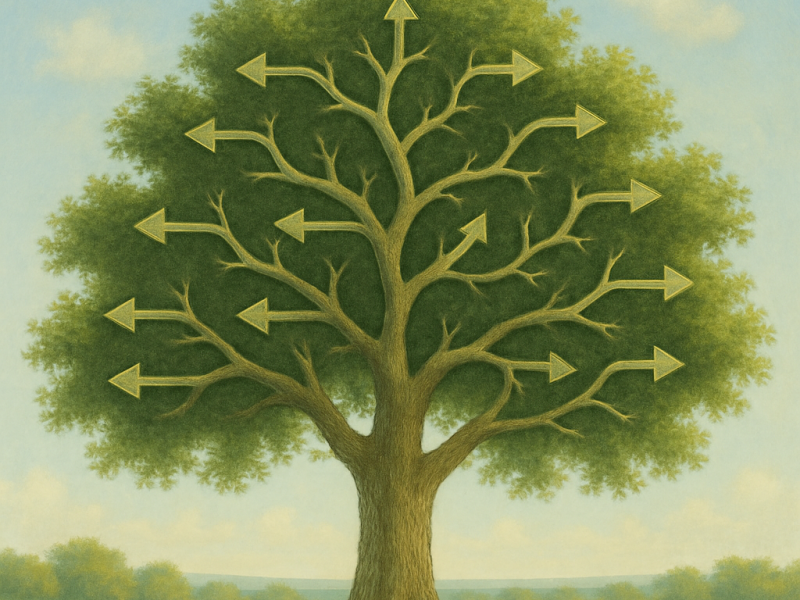Making technical decisions is easy: Excel and that’s it. When it comes to human and emotional decisions, that’s not enough.
The human brain consists of two hemispheres - the left hemisphere and the right hemisphere. These two halves are connected by a tissue called the corpus callosum, which enables the exchange of information between the two parts. Each hemisphere is responsible for different functions, and the way they work together enables us to perform complex tasks.
Left side of the brain
The left hemisphere is often considered the logical or analytical side of the brain. Its main functions include:
- Language: the left hemisphere plays a key role in language processing, including speaking, reading and writing.
- Logical reasoning: it is responsible for analytical skills and processing information in a sequential and orderly manner.
- Mathematical skills: Calculations and mathematical problem solving are predominantly left brain functions.
- Detail orientation: It tends to focus on details more than the big picture.
Right hemisphere of the brain
The right hemisphere is considered the creative or intuitive side of the brain. Its main functions include:
- Spatial perception: it is important for interpreting and understanding spatial relationships and spatial orientation.
- Facial recognition: The ability to recognize and interpret faces is processed in the right hemisphere.
- Creativity: Music, art and other creative activities are often associated with the right hemisphere.
- Holistic thinking: The right side is better at seeing the big picture and recognizing patterns or relationships in a broader context.
Cooperation of the hemispheres
Although some functions tend to be associated with a particular hemisphere, it is important to emphasize that both sides of the brain work closely together in most activities. The idea that people are either “left-brained” or “right-brained” is a simplification and does not reflect the complexity of brain functions. In fact, most cognitive functions are the result of integrated work between the two hemispheres. In people whose connection between the two hemispheres has been interrupted, strange effects occur in everyday life. An interesting read on the subject by Oliver Sacks: “The man who mistook his wife for a hat”.
Combined decision-making
The Excel sheet mentioned at the beginning is therefore not completely digestible for humans. It only maps the left side of the brain. But what about the gut feeling? We won't get anywhere here with “cold” numbers. Fortunately, there are also “soft” criteria that cannot be directly quantified. Good examples here are quality, likeability or reputation. We can certainly rate the “reputation” of a person on a scale of 1 to 10. But basically we judge quality, for example, by comparing several products with each other. A number is hard to grasp - but comparing two cars is easy. One has better quality than the other.
When we use these “soft” (qualitative) criteria, we compare all options of a decision with each other. Prof. Thomas L. Saaty has developed a method that enables the calculation of decisions by means of “pairwise comparison”. Contradictory information can also be eliminated if desired.
How does it work?
PhaenoMind makes it possible to use quantitative (i.e. the Excel table) and qualitative (such as quality) criteria together. Both types of criteria are used for all alternatives of a decision under discussion.
The final evaluation is then carried out in the default setting with 50% for each side. It becomes interesting when we move the slider provided for this purpose in one direction or the other.
This is then equivalent to the rational view, in which we compare the technical factors with our gut feeling and then decide.
What percentage would you set the slider to? 60% gut feeling? Try it out!
Tagged
You might also like
-
Decisions for life
Published on
-
Decision-making generates Responsibility
Published on
-
Deciding with your gut feeling?
Published on
-
The 5 Components of a Good Decision
Published on
-




